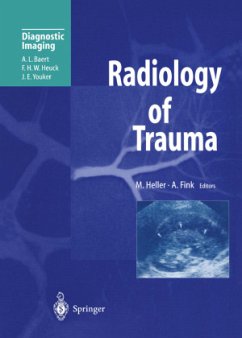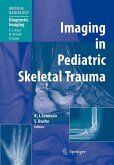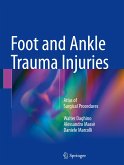A summary of the radiological tools available for diagnosing traumatized patients, logically linking the mechanics of trauma and the resulting injuries. The book reviews widely accepted trauma classifications, explains relevant examination methods, and summarizes the typical trauma patterns that can be expected with each imaging modality. The authors give decision pathways based on their experience as well as on recent scientific results. The result is a bridge between the disciplines cooperating in hospitals in the treatment of acutely injured patients.
Trauma is a very common condition in medical practice and a frequent cause of death, morbidity and dis ability. Although most radiologists will spend a considerable amount of their time dealing with trauma patients, this topic has not acquired "prestige" status in radiological meetings, journals or books. This is regrettable because the radiologist is frequently able to make a specific and very valuable contribution to the handling and management of trauma patients admitted to the emergency departments of our hospitals. Indeed, the radiologist, by virtue of his specific expertise, is able to provide excellent advice to clinicians concerning the choice and the sequence of examinations. He can thereby provide qualified support for rapid decisions that may be either vital for the patient's outcome or decisive for an early recovery without dis ability or long-Iasting sequelae. This book is unrivalled in its complete and meticulous coverage of the diagnostic imag ing methods used in trauma patients. It is written by outstanding European experts and provides comprehensive coverage of all anatomical areas that may be involved in patients with skeletal or visceral traumatic lesions. Professor M. Heller, Dr. A. Fink, and their team in Kiel have long-standing experience and a solid international reputation in the field of radiological imaging and management of trauma. They have been assisted in their task by several other well-known specialists in this area.
Trauma is a very common condition in medical practice and a frequent cause of death, morbidity and dis ability. Although most radiologists will spend a considerable amount of their time dealing with trauma patients, this topic has not acquired "prestige" status in radiological meetings, journals or books. This is regrettable because the radiologist is frequently able to make a specific and very valuable contribution to the handling and management of trauma patients admitted to the emergency departments of our hospitals. Indeed, the radiologist, by virtue of his specific expertise, is able to provide excellent advice to clinicians concerning the choice and the sequence of examinations. He can thereby provide qualified support for rapid decisions that may be either vital for the patient's outcome or decisive for an early recovery without dis ability or long-Iasting sequelae. This book is unrivalled in its complete and meticulous coverage of the diagnostic imag ing methods used in trauma patients. It is written by outstanding European experts and provides comprehensive coverage of all anatomical areas that may be involved in patients with skeletal or visceral traumatic lesions. Professor M. Heller, Dr. A. Fink, and their team in Kiel have long-standing experience and a solid international reputation in the field of radiological imaging and management of trauma. They have been assisted in their task by several other well-known specialists in this area.








